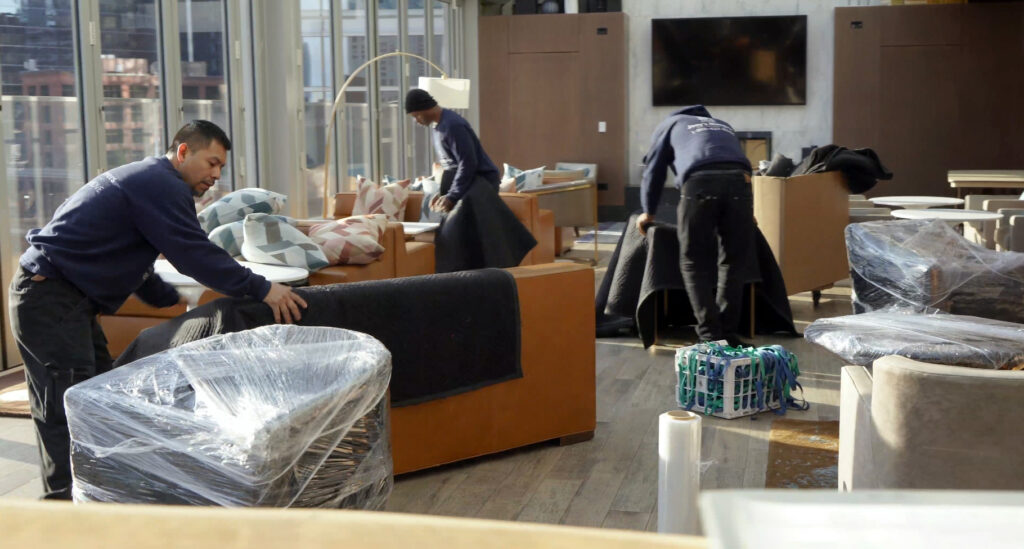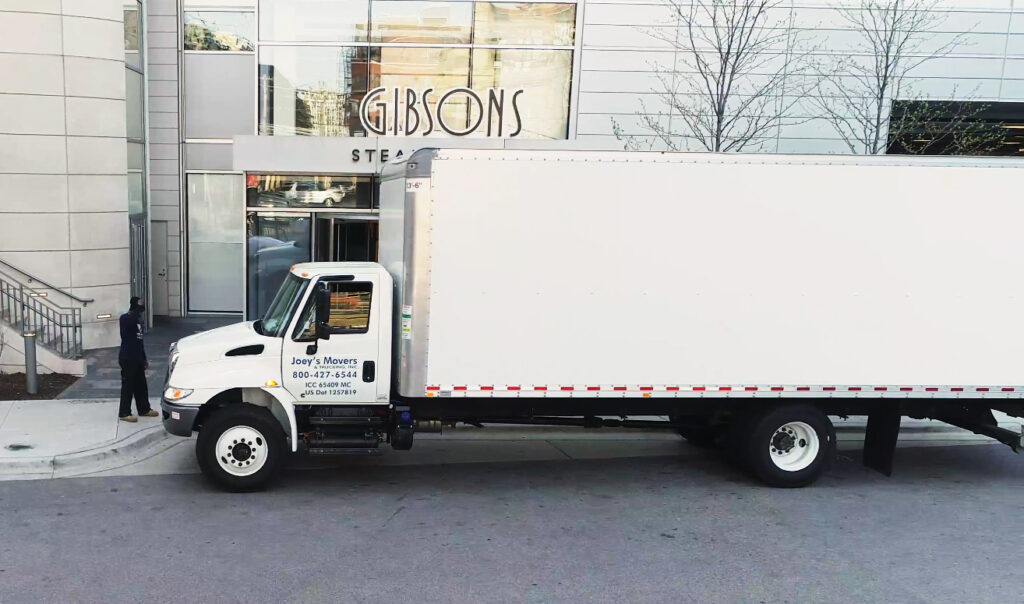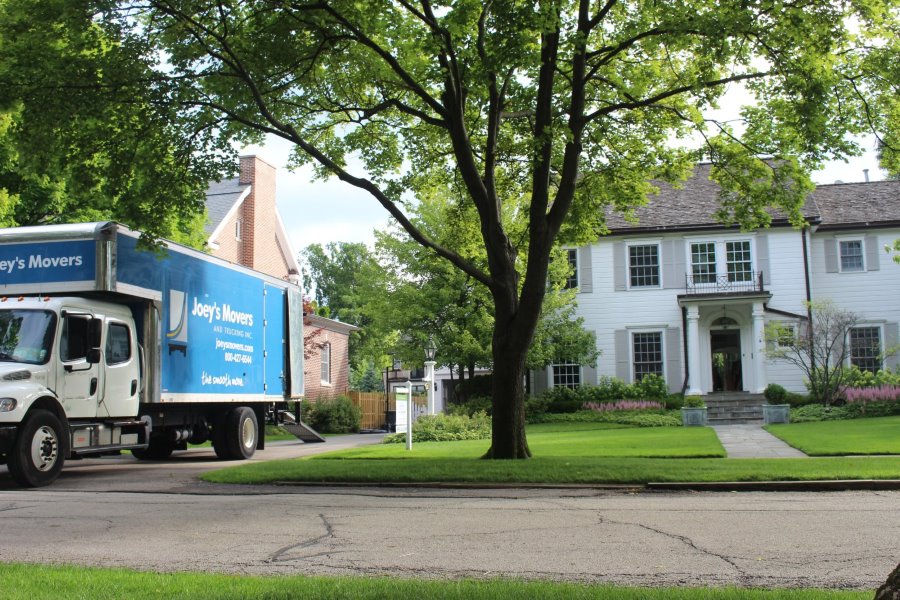Relocating an office is a multifaceted project that impacts not just furniture and equipment but your business’s day-to-day operations. From safeguarding IT systems and confidential documents to reassembling workstations and coordinating schedules, every step must be managed precisely. This guide walks through everything companies need to know about office moving services and why choosing the right partner matters.
What Are Office Moving Services?
Office moving services are designed to handle every detail of a commercial relocation. Unlike basic moving companies, professional office movers offer end-to-end support that includes disassembling modular furniture, managing high-value electronics, securing storage, and even navigating elevator access and parking permits.
What’s Included in a Professional Office Move
- Pre-Move Planning & Coordination: Detailed site assessments, scheduling, and logistical preparation. (Learn more)
- Packing & Inventory Management: Labeled packing for IT equipment, office supplies, and sensitive documents.
- Transportation: Climate-controlled trucks for servers and GPS-tracked fleets for real-time updates.
- Unpacking & Setup: Floorplan-based workstation setup and IT reconnection.
- Storage & Disposal: Temporary storage solutions and eco-friendly disposal of unwanted office assets.
Specialized Handling of Technology & Equipment
Our experienced office equipment movers are trained to handle data centers, telecommunications systems, and proprietary technology. These high-value items require anti-static packing materials, secure transit, and on-site support for disconnection and reconnection. Choosing movers who are specifically experienced in technology-focused environments ensures a higher degree of protection and performance post-move. That’s exactly what you get with Joey’s Movers.
Furniture Disassembly and Reassembly
Professional office movers also manage the breakdown and reassembly of cubicles, conference tables, and filing systems. Precision and efficiency are critical to minimizing disruption and maintaining business continuity. Incorrectly reassembled furniture can lead to injuries or costly productivity delays, which is why trained personnel are essential for this part of the move.
How Much Does It Cost to Move an Office?
Office moving costs vary widely depending on square footage, number of employees, technical complexity, and distance. Below are the estimated pricing ranges:
- Small Office (under 2,000 sq. ft.): $1,500 – $5,000
- Medium Office (2,000 – 5,000 sq. ft.): $5,000 – $15,000
- Large Corporate Move: $15,000+
Factors such as stair access, after-hours moving, and specialized handling (e.g., servers or medical equipment) can significantly impact the total. Costs also increase if your business is moving between cities or states, especially if movers are required to provide overnight accommodations or extended labor.
Hidden Costs to Watch
- IT disconnection/reconnection fees
- Packing material surcharges
- Building access permits or elevator reservations
- After-hours or weekend labor rates
- Furniture repair or replacement due to improper packing
- Additional insurance for high-value equipment or artwork
How Do You Estimate the Cost of Moving an Office?
A proper cost estimate starts with a site visit. Our movers assess inventory, the layout of both the current and new spaces, and any logistical barriers. Estimations typically factor in:
- Labor Requirements: Number of movers needed and duration.
- Truckloads & Equipment: Size and number of moving trucks, packing materials, and any specialty gear.
- Timing: Whether the move occurs during business hours, after hours, or on weekends.
- Technology Assets: Special handling for IT infrastructure, including servers and telecom racks.
- Storage Needs: Whether temporary off-site storage is required during the transition.
Professional Office Movers vs. DIY
Hiring professionals brings speed, efficiency, and peace of mind. Our trained crews understand how to handle IT infrastructure and sensitive documents while ensuring minimal disruption to daily operations. A professional move means you’ll also have insurance coverage in case of damage, as well as a detailed timeline to keep your transition on track.
When DIY Might Work
DIY moving may be feasible for very small offices with no servers, limited equipment, and a flexible schedule. For example, startups with fewer than five people may opt to move with rented vans and team help. However, businesses risk:
- Damaging expensive equipment
- Underestimating time and labor
- Losing valuable working hours
- Poor employee morale
Is It Cheaper to Use PODS or Office Movers?
Portable storage containers (PODS) appear more cost-effective upfront, but they shift all labor and coordination to your team. There’s no packing assistance, no setup at your new space, and no insurance for handling IT systems. PODS may be useful for very small businesses with long timeframes and minimal IT infrastructure. Here’s a breakdown:
| Feature | Professional Office Movers | PODS |
| Full-Service Packing & Moving | Yes | No |
| IT Equipment Handling | Yes | No |
| Liability Insurance | Comprehensive | Limited |
| Setup at Destination | Yes | No |
| Business Downtime Minimized | Yes | No |
If minimizing downtime and reducing internal burden is a priority, full-service office relocation services offer significantly more value. PODS can become inefficient and more expensive over time if delays occur or if additional storage days are required.
Choosing the Right Office Moving Services
Not all moving companies are equipped to handle commercial relocations. Look for:
- Licensing and Commercial Credentials: Verify state and local certifications.
- Relevant Industry Experience: Especially for healthcare, legal, and technology firms.
- Insurance Coverage: Ensure the mover offers adequate protection for high-value assets.
- Verified Customer Reviews: Cross-reference platforms like Google and the Better Business Bureau for consistent client satisfaction.
- Flexible Scheduling Options: Movers who offer weekend or after-hours moves reduce business interruption.
- Custom Moving Plans: Companies that tailor strategies to your business layout and employee schedule tend to provide more efficient service.
Office Relocation Checklist
To streamline your move,start planning at least two months in advance. The more organized you are, the less risk you’ll face.
Visual Checklist for Office Relocation
60 Days Before the Move
- Select your office moving company
- Conduct a walkthrough and finalize the move plan
- Coordinate with building management to reserve elevators and loading docks
30 Days Before the Move
- Inventory assets and label equipment
- Back up all critical data
- Communicate the plan to employees and vendors
- Begin packing non-essential items
14 Days Before the Move
- Confirm timelines with your movers
- Test backup systems and prepare for IT migration
- Prepare welcome packets for the new office with maps, parking info, and security protocols
Moving Day
- Ensure IT support is available on-site
- Conduct final walkthroughs at both locations
- Confirm delivery of all equipment and furniture
- Set up a command center for troubleshooting and coordination
Final Thoughts
A successful office move demands more than packing boxes. It requires experience, planning, and coordination. With over 40 years of commercial moving experience in Chicagoland, Joey’s Movers ensures a smooth, efficient relocation with minimal disruption. Whether you’re a startup, law office, tech firm, or corporate headquarters, you can count on Joey’s for tailored, end-to-end office relocation services.
Get a free quote or call (847) 674-7779 to schedule your office move with confidence.
Photo by Pixabay





